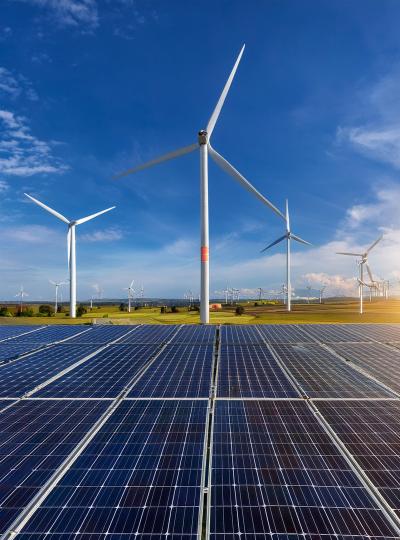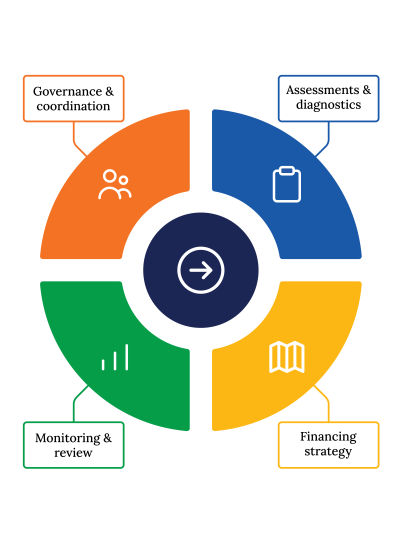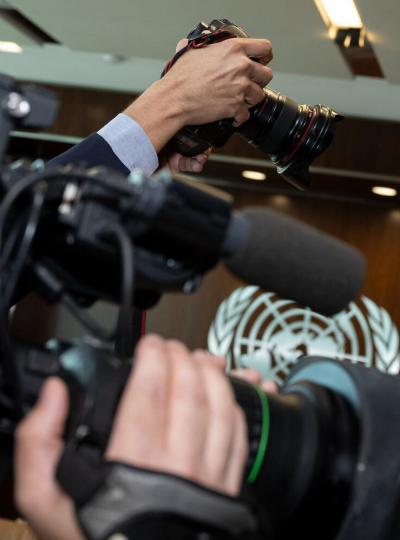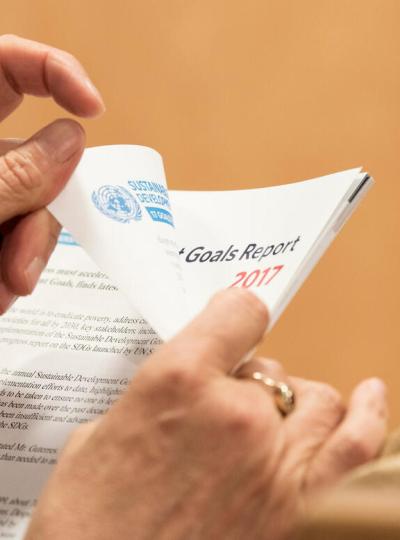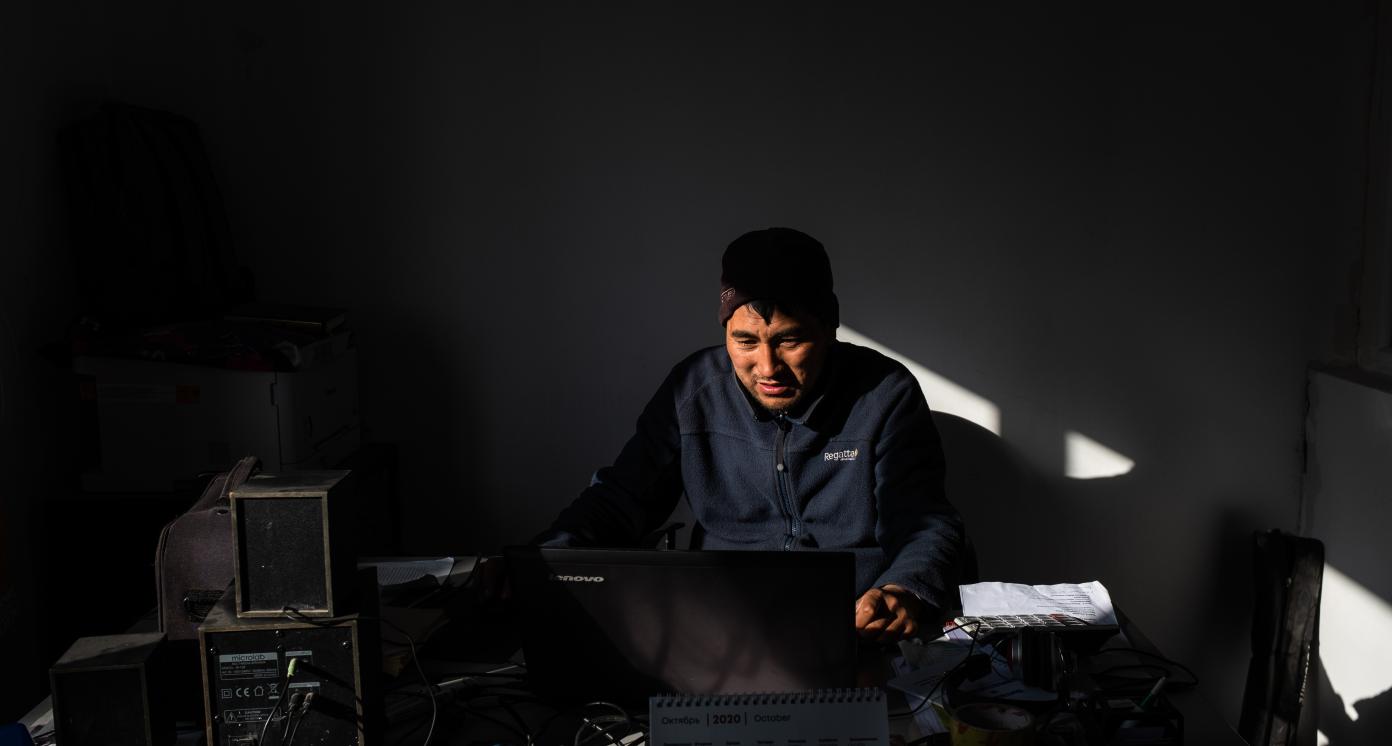Private Technical and Vocational Education and Training (TVET) for Development of Green Economy
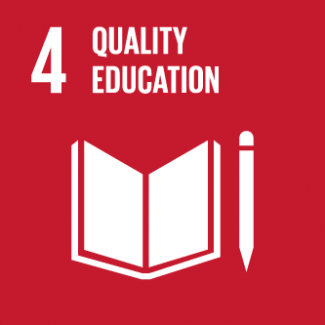
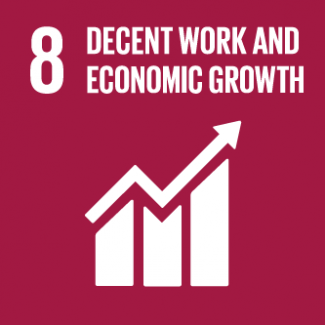
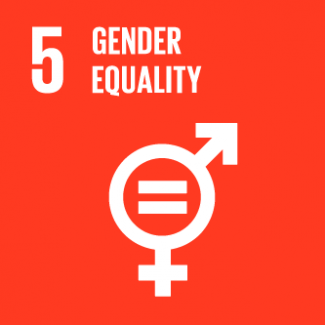
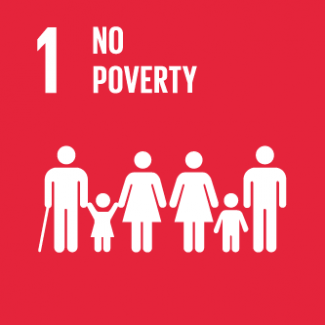
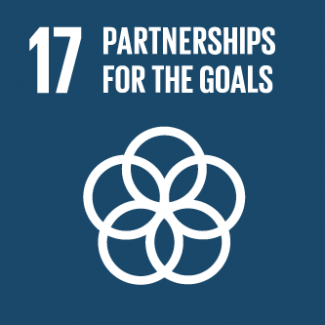
Business Model Description
Establish and operate a private technical and vocational educational institution (TVET) with programs prioritizing subjects that promote a green economy, such as renewable energy, energy efficiency, sustainable tourism and organic agricultural programs, as well as Information Technology (IT) and creative programmes. The private TVET would generate revenue from tuition fees, programmes for continuing education and grants.
Expected Impact
Increase the supply of qualified workforce in the labour market, reduce youth unemployment, and boost economic productivity.
How is this information gathered?
Investment opportunities with potential to contribute to sustainable development are based on country-level SDG Investor Maps.
Disclaimer
UNDP, the Private Finance for the SDGs, and their affiliates (collectively “UNDP”) do not seek or solicit investment for programmes, projects, or opportunities described on this site (collectively “Programmes”) or any other Programmes, and nothing on this page should constitute a solicitation for investment. The actors listed on this site are not partners of UNDP, and their inclusion should not be construed as an endorsement or recommendation by UNDP for any relationship or investment.
The descriptions on this page are provided for informational purposes only. Only companies and enterprises that appear under the case study tab have been validated and vetted through UNDP programmes such as the Growth Stage Impact Ventures (GSIV), Business Call to Action (BCtA), or through other UN agencies. Even then, under no circumstances should their appearance on this website be construed as an endorsement for any relationship or investment. UNDP assumes no liability for investment losses directly or indirectly resulting from recommendations made, implied, or inferred by its research. Likewise, UNDP assumes no claim to investment gains directly or indirectly resulting from trading profits, investment management, or advisory fees obtained by following investment recommendations made, implied, or inferred by its research.
Investment involves risk, and all investments should be made with the supervision of a professional investment manager or advisor. The materials on the website are not an offer to sell or a solicitation of an offer to buy any investment, security, or commodity, nor shall any security be offered or sold to any person, in any jurisdiction in which such offer would be unlawful under the securities laws of such jurisdiction.
Country & Regions
- Kyrgyzstan: Osh Oblast
- Kyrgyzstan: Bishkek
Sector Classification
Education
Development need
In 2020-2023, the number of pupils in secondary schools grew from 687,688 to 757,153, reflecting a 10% increase over five years. However, national assessments indicate that only half of the students demonstrate basic proficiency in reading, mathematics, and science. Additionally, only 21% of schools (459 in total) meet sanitary and epidemiological standards (1, 2, 3).
Policy priority
The Strategy for the Development of Education for 2021–2040 seeks to enhance access to quality education, align sanitation norms with SDG 6, promote teacher development, and retain qualified personnel. National Development Programme until 2026 recognizes digitalization, regional development, and links to science and businesses as key to sectoral development (4, 5).
Gender inequalities and marginalization issues
At the start of the 2021/2022 school year, most out-of-school children were from rural areas, with their numbers being twice that of urban areas. Urban children demonstrated 12.9% higher reading skills compared to rural peers. Although girls generally outperformed boys in reading and math, rural boys lagged behind urban boys by 14.6% (6).
Investment opportunities introduction
The government sees the main priority in developing primary education where the main investments will be directed. In 2023, foreign direct investments (FDI) into the education sector amounted to USD 1,154,000, making up 0.1% of the total FDI inflow into the country (5, 7).
Key bottlenecks introduction
A significant problem across the country is the lack of buildings and premises to ensure an effective learning environment and creative development for all children in the Republic (3).
Formal Education
Development need
Only 23.9% of children aged 3-6 received preschool education in 2022, while over 240,000 youth (15-24) in Kyrgyzstan are not in education, employment, or training (NEET). Public schools face severe challenges, including overcrowding – 72% operate in two shifts – and a lack of qualified staff, as only 14% of teachers completed advanced training between 2017 and 2022 (3, 4).
Policy priority
The Strategy for the Development of the Education Sector for 2021-2040 aims to ensure the availability of preschool education, enhanced vocational education and youth employment, promotion of teacher development and retention of qualified personnel, and construction and renovation of physical school infrastructure by 2040 (4).
Gender inequalities and marginalization issues
Significant disparities in education quality persist across Kyrgyzstan's regions, particularly between rural and urban schools. While women made up 51% of university students in 2021-2022, men prevailed among students studying technical, agricultural, and medical programmes (4, 6).
Investment opportunities introduction
In 2024, the Kyrgyz government allocated KGS 64.9 billion to education (5.2% of GDP and 14.5% of total budget expenditure). Opportunities include constructing preschool and school infrastructure through public-private partnerships and launching higher education initiatives on climate change and green technologies (8, 9).
Key bottlenecks introduction
The sectoral development is aggravated by labour migration, with 46% of Kyrgyz migrants being youth aged 18-29, predominantly relocating to neighbouring countries (10).
Pipeline Opportunity
Private Technical and Vocational Education and Training (TVET) for Development of Green Economy
Establish and operate a private technical and vocational educational institution (TVET) with programs prioritizing subjects that promote a green economy, such as renewable energy, energy efficiency, sustainable tourism and organic agricultural programs, as well as Information Technology (IT) and creative programmes. The private TVET would generate revenue from tuition fees, programmes for continuing education and grants.
Business Case
Market Size and Environment
USD 50 million - USD 100 million
44 privately owned colleges
Kyrgyzstan has 235 colleges, including at least 44 privately owned institutions, which can host up to 200 students. Tuition fees in the cities of Bishkek and Osh range between USD 1700 to USD 7,500 per year (12, 14, 29).
According to the Ministry of Education and Science, in the 2023-2024 academic year, 73,051 students graduated from the 11th grade, and over 128,000 students graduated from the 9th grade. However, in the same year, only 19,582 students enrolled in private TVET institutions (16, 17).
Indicative Return
15% - 20%
Based on a payback period of 7 years, initial investment of USD 2-3 million as well as annual cash flow of USD 300,000 a year, the internal rate of return can reach up 17% in Kyrgyzstan (13, 15).
Investment Timeframe
Medium Term (5–10 years)
Private colleges in Kyrgyzstan reveal a payback period of over 7 years (13, 15).
Ticket Size
USD 1 million - USD 10 million
Market Risks & Scale Obstacles
Market - Highly Regulated
Capital - CapEx Intensive
Impact Case
Sustainable Development Need
There is a market mismatch between the skills profile of vocational education graduates and national and regional economic priorities (4, 18).
As of 2021, the technical and vocational education and training (TVET) enrolment rate is limited, with 10.6%of young people aged 15-24 years in TVET, 2.3% in primary TVET, and 8.3% in secondary TVET (18).
Technical and vocational education institutions face significant challenges, including outdated curricula, obsolete equipment, and a shortage of qualified instructors (4).
Gender & Marginalisation
In 2022, 8.4% of the youth population was unemployed, but unemployment rates were significantly higher for women and in certain regions, reaching up to 15% (19).
In 2018, female enrolment in vocational programs was at 41% level (20).
A significant gender gap persists in energy sector training. In secondary and higher vocational institutions offering "Electric and Thermal Power Engineering," women comprise just 3.3% of students, while men account for 96.7% (24).
Expected Development Outcome
Private technical and vocational education and training with a focus on "green economy" programmes improve occupational skills and productivity in the young labour force increasing private sector development, diversifying economic activities and reducing poverty.
Private technical and vocational education and training increase enrolment into professional education institutions and reduces skills mismatch in the labour market.
New private vocational institutions enhance education curriculum, provide new equipment and facilities, and attract more qualified personnel.
Gender & Marginalisation
Private technical and vocational education and training enhance female employment in emerging fields such as renewable energy, energy efficiency, IT, organic agriculture, and tourism, driving higher wages and productivity while narrowing the gender unemployment gap.
Private technical and vocational education and training improve female participation in vocational education programmes.
Primary SDGs addressed

4.3.1 Participation rate of youth and adults in formal and non-formal education and training in the previous 12 months, by sex
4.4.1 Proportion of youth and adults with information and communications technology (ICT) skills, by type of skill
The proportion of youth and adults with information and communications technology (ICT) skills was 29,7% in 2018. The proportion of women aged 15-24 with information and communications technology (ICT) skills in 2018 was 13.6% (21, 23)

8.6.1 Proportion of youth (aged 15–24 years) not in education, employment or training
In 2019, there were more than 240,000 young people aged 15 to 24 who were not studying or working. The proportion of youth (aged 15–24 years) not in education, employment or training in 2023 was 18.6% (4, 22).
Secondary SDGs addressed



Directly impacted stakeholders
People
Gender inequality and/or marginalization
Indirectly impacted stakeholders
Planet
Corporates
Public sector
Outcome Risks
Private education can disrupt the education sector by attracting the most qualified instructors, leading to a disparity in the quality of education between public and private institutions.
Impact Risks
If tuition fees are high and scholarship opportunities for talented students are not introduced, the business model's impact will be limited due to restricted beneficiary outreach.
If technical and vocational education does not consider current specialization trends and national economic priorities such as "green economy', the impact on the labour market will be hindered.
Impact Classification
What
Private technical and vocational education boosts youth TVET enrolment, reduces skills mismatch, lowers youth unemployment, and drives economic growth.
Who
Youth, particularly women, employers, and the government benefit from better access of young people to quality education.
Risk
High tuition fees and a lack of curriculum that matches the market needs may limit the impact of private technical and vocational education and training.
Contribution
Private TVET programs focused on green economy specializations produce highly qualified local professionals, a role previously fulfilled solely by universities.
How Much
Private TVET programs focused on green economy specializations can increase women's participation in energy and electricity-related fields by up to 8% (24).
Impact Thesis
Increase the supply of qualified workforce in the labour market, reduce youth unemployment, and boost economic productivity.
Enabling Environment
Policy Environment
The Strategy for the development of the education sector 2021-2040, 2021: aims to ensure conditions for vocational education of young people and adults that meet the needs of regional, national and international labour markets and ensure employment by 2040 (4).
Program for the Development of the Green Economy in the Kyrgyz Republic for 2024-2028 (project), 2024: aims to increase the participation of women in secondary and higher vocational education programs focused on "Electricity and Heat Energy" and "Energy and Electricity Energy" (24).
National Development Strategy for the Kyrgyz Republic for 2018-2040, 2018: envisions an education system focused on professional development, designed to be flexible and responsive to evolving demands for specialists (25).
National Development Programme until 2026, 2021: emphasizes establishing direct collaboration between businesses and professional educational institutions to align training content and methods with current industry demands (5).
Financial Environment
Financial incentives: OJSC Salym Finance and OJSC Bank Bai-Tushum provide loans from KGS 5,000 (USD 57) to KGS 1.5 million (USD 17,153) for 2-6 years under 21.9-26.9% interest rates to pay tuition fees for technical education, among other purposes (31).
Regulatory Environment
Resolution of the Government of the Kyrgyz Republic No. 491 "On approval of the National Qualifications Framework", 2020: defined a unified scale of qualification levels for the development of industry qualification frameworks and professional standards (26).
Law of the Kyrgyz Republic No. 179 on education, 2023: defines secondary vocational education, specifies the rights of vocational education certificate holders, and highlights the role of social partnerships in enhancing training quality (27).
Marketplace Participants
Private Sector
Compass College, Portal College, Technical School of Innovation AUCA
Government
Ministry of Science and Education, Ministry of Economy and Commerce, National Investments Agency under the President
Multilaterals
Asian Development Bank (ADB), Gesellschaft für Internationale Zusammenarbeit (GIZ), European Bank for Reconstruction and Development (EBRD)
Non-Profit
Aga Khan Foundation (AKF), Association for the Education Development in Kyrgyzstan (AED)
Target Locations
Kyrgyzstan: Osh Oblast
Kyrgyzstan: Bishkek
References
- (1) National Statistical Committee of the Kyrgyz Republic. 2023. Coverage of children with secondary general education by sex and territory. https://stat.gov.kg/en/statistics/download/dynamic/1219/
- (2) UNICEF Kyrgyzstan. 2024. Strengthening the Education System. https://www.unicef.org/kyrgyzstan/strengthening-education-system
- (3) Ministry of Education and Science of the Kyrgyz Republic & UNICEF. 2022. Education Joint Sector Review. https://www.unicef.org/kyrgyzstan/media/8021/file/Education%20Joint%20Sector%20Review.pdf
- (4) Ministry of Education and Science of the Kyrgyz Republic. 2019. Strategy for the development of education in the Kyrgyz Republic for 2021-2040. https://edu.gov.kg/media/files/5dbacad5-70a0-4afd-a555-2b7aff342609.doc
- (5) Кабинет Министров Кыргызской Республики. 2021. Национальная программа развития Кыргызской Республики до 2026 года. https://faolex.fao.org/docs/pdf/kyr208595.pdf
- (6) National Statistical Committee of the Kyrgyz Republic & UN Women. 2023. Sustainable Development Goals and Gender. https://data.unwomen.org/sites/default/files/documents/Publications/2023/Kyrgyz-SDG-gender.pdf
- (7) National Statistical Committee of the Kyrgyz Republic. 2023. Foreign Direct Investments in 2023. https://stat.gov.kg/ru/statistics/download/operational/1763/
- (8) Министерство финансов Кыргызской Республики. 2023. Гражданский бюджет по республиканскому бюджету Кыргызской Республики на 2024 год. https://www.minfin.kg/storage/files/shares/Post/Post-1117/documents/07f5b1a52585da21ec4fcd1495f1f1dc.pdf
- (9) World Bank. 2024. World Bank to Help the Kyrgyz Republic Boost the Quality and Relevance of Higher Education. https://www.worldbank.org/en/news/press-release/2024/01/31/kyrgyz-republic-higher-education-quality-and-innovation-project
- (10) UNFPA. 2021. Ситуационный анализ молодежи. https://kyrgyzstan.unfpa.org/sites/default/files/pub-pdf/situacionnyy_analiz_molodezhi_ru_0.pdf
- (11) Technical School of Innovation AUCA. 2024. [Home page]. https://tsiauca.kg/
- (12) Compass College. 2024. [Home page]. https://compasscollege.art/ru
- (13) Stakeholder consultations with a private colleage. October 2024.
- (14) Portal College. 2024. [Home page]. https://portalcollege.com/eng
- (15) Stakeholder consultations with a private college. November, 2024.
- (16) Национальный статистический комитет Кыргызской Республики. 2023. Численность детей и учащихся по формам собственности организаций. https://stat.gov.kg/ru/statistics/download/dynamic/698/
- (17) ИА Кабар. 2024. В Кыргызстане в этом году 11 класс окончат более 73 тысяч выпускников. https://kabar.kg/news/v-kyrgyzstane-v-etom-godu-11-klass-okonchat-bolee-73-tysiach-vypusknikov/
- (18) ADB. 2021. Technical and Vocational Education and Training in Tajikistan and Other Countries in Central Asia. https://www.adb.org/sites/default/files/publication/691671/tvet-tajikistan-central-asia.pdf
- (19) National Statistical Committee of the Kyrgyz Republic. 2022. General unemployment rate at the age of 15-28 by territory and sex. https://www.stat.gov.kg/media/files/bc442f3c-fde7-45e4-b28e-7157176c1311.xlsx
- (20) UNESCO-UNEVOC. 2024. Kyrgyzstan TVET Country Profile. https://unevoc.unesco.org/home/Dynamic+TVET+Country+Profiles/country=KGZ
- (21) Национальный статистический комитет Кыргызской Республики. 2018. Доля женщин в возрасте 15-49 лет, обладающих навыками в области информационно-коммуникационных технологий, в разбивке по видам навыков (показатель 4.4.1). https://sustainabledevelopment-kyrgyzstan.github.io/4-4-1/
- (22) Национальный статистический комитет Кыргызской Республики. 2023. Доля молодежи (в возрасте от 15 до 24 лет), которая не учится, не работает и не приобретает профессиональных навыков (показатель 8.6.1). https://sustainabledevelopment-kyrgyzstan.github.io/8-6-1/
- (23) National Statistical Committee of the Kyrgyz Republic. 2018. Proportion of youth and adults with information and communications technology (ICT) skills, by type of skill (in percents). https://stat.gov.kg/en/opendata/category/3025/
- (24) Министерство Экономики и Коммерции. 2024. Программа развития зеленой экономики в Кыргызской Республике на 2024-2028 годы. https://mineconom.gov.kg/froala/uploads/file/3bd5db922cf87fc28a0f3cbeced8e2bbe286956c.pdf
- (25) Cabinet of Ministers. 2018. The National Development Strategy of the Kyrgyz Republic for 2018-2040. https://policy.thinkbluedata.com/sites/default/files/National%20Development%20Strategy%20of%20the%20Kyrgyz%20Republic%20for%202018-2040%20%28EN%29.pdf
- (26) Кабинет Министров Кыргызской Республики. 2020. Поставновление Правительства КР от 18 сентября 2020 года №491. https://www.gov.kg/ru/npa/s/2709
- (27) Министерство Юстиций Кыргызской Республики. 2023. Закон Кыргызской Республики от 11 августа 2023 года №179 Об образовании. https://cbd.minjust.gov.kg/4-3419/edition/1273902/ru
- (28) Национальный статистический комитет Кыргызской Республики. 2023. Численность образовательных организаций по территории. https://stat.gov.kg/ru/statistics/download/dynamic/701/
- (29) Национальный статистический комитет Кыргызской Республики. 2023. Численность образовательных организаций по видам и формам собственности. https://stat.gov.kg/ru/statistics/download/dynamic/702/
- (30) Национальный статистический коммитет. 2024. В I полугодии отмечен рост реальных денежных доходов населения на 18%. https://stat.gov.kg/ru/news/v-i-polugodii-otmechen-rost-realnyh-denezhnyh-dohodov-naseleniya/
- (31) Banks.kg. 2024. Депутаты предлагают выдавать студентам кредиты на образование с низкой процентной ставкой. https://banks.kg/news/deputies-propose-issuing-education-loans-low-interest-rates





